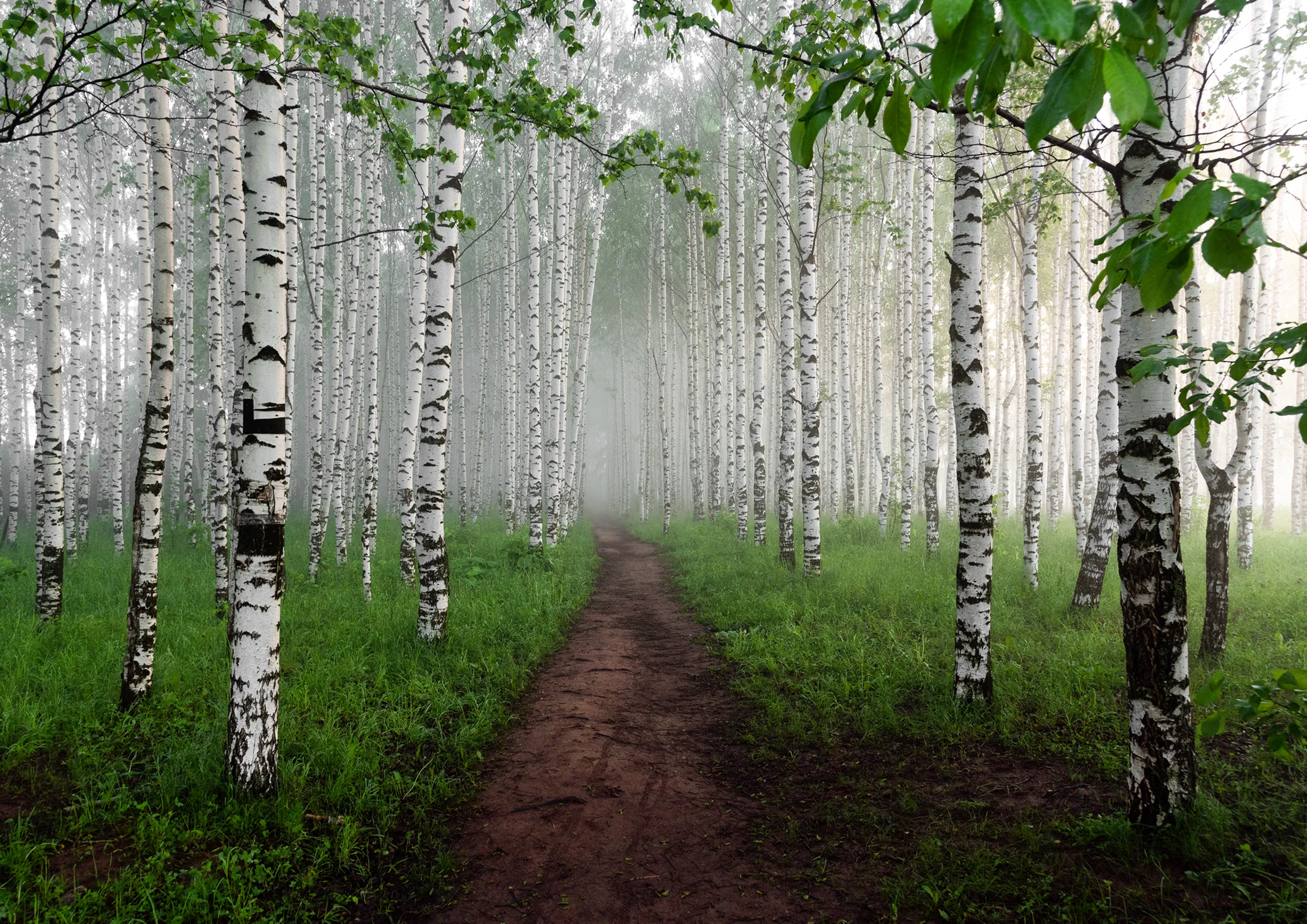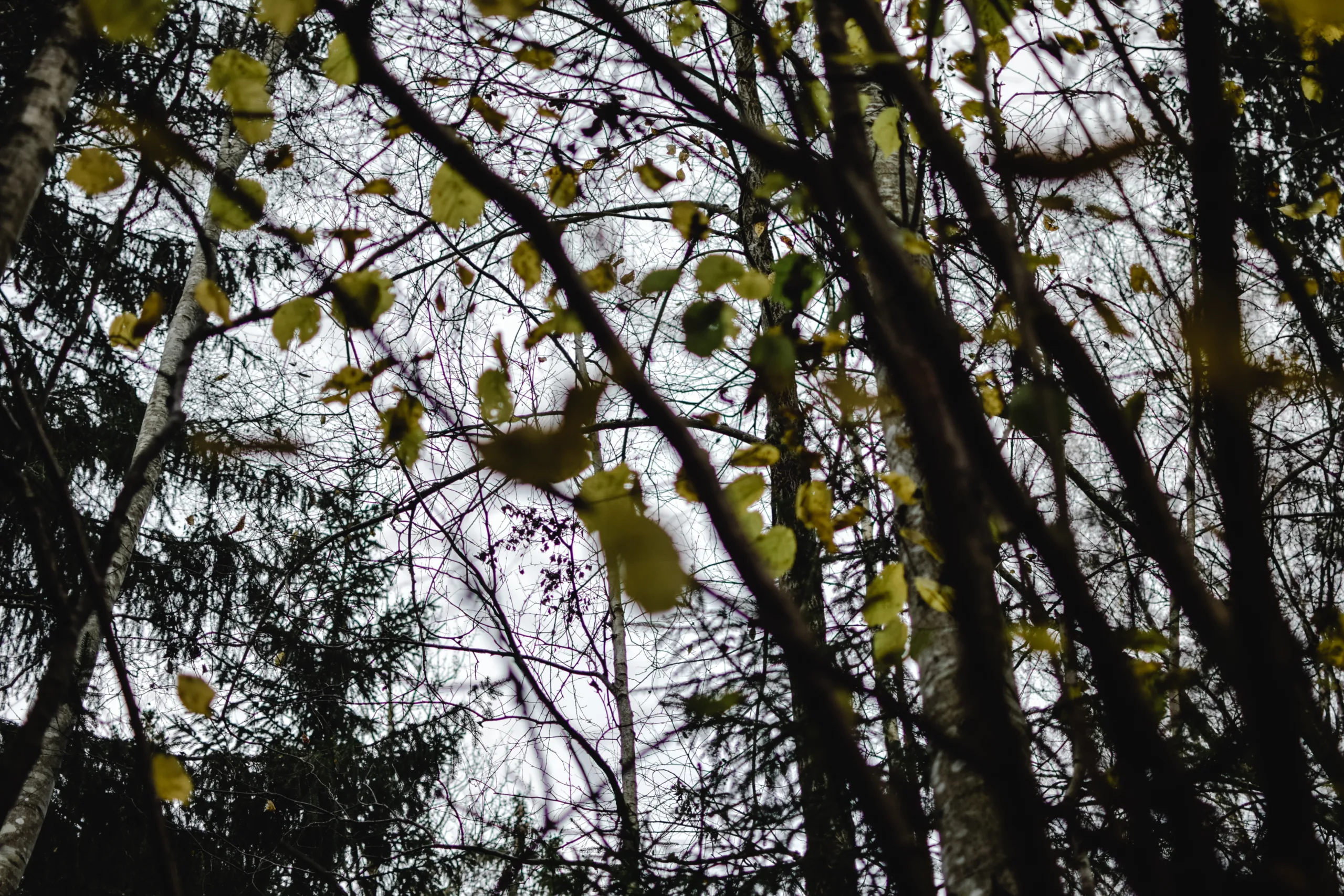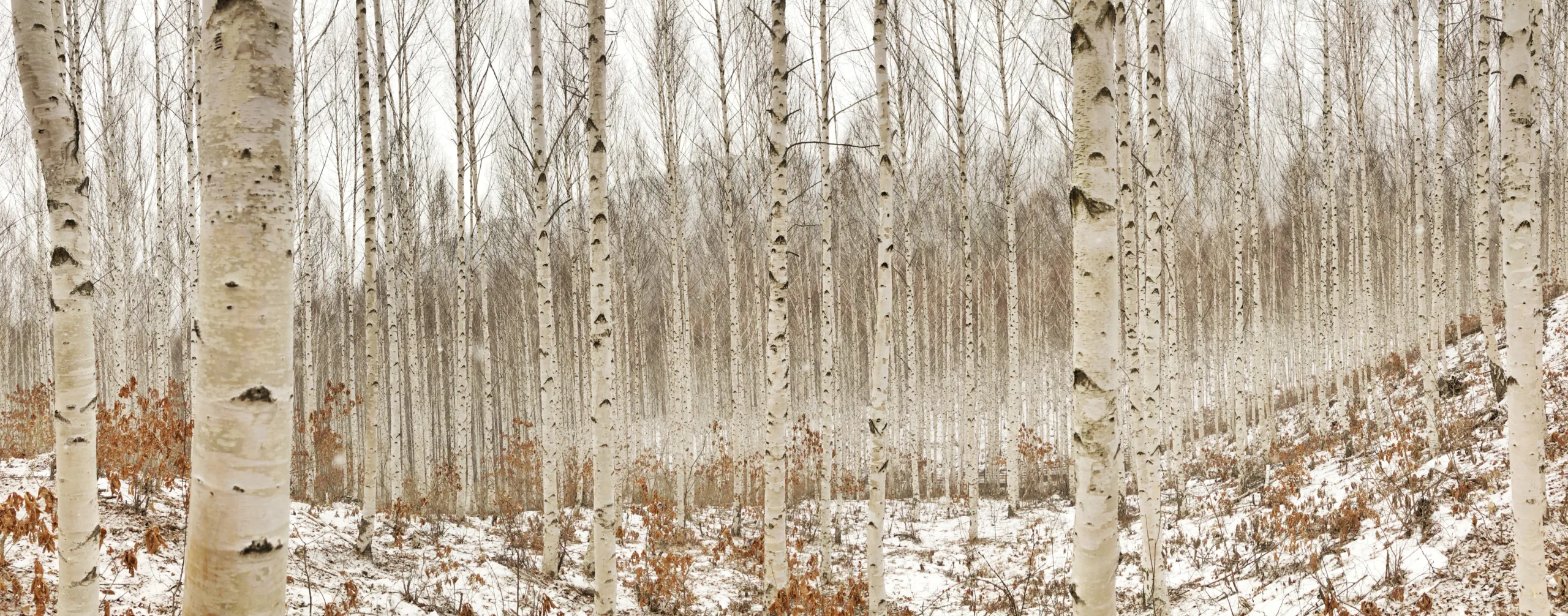Do you have a birch tree in your yard that is being attacked by aphids? Are you looking for an effective way to get rid of these pesky pests?
The presence of aphids can cause major damage to your birch trees, so it’s important to take action as soon as possible. In this article, we’ll explore how you can get rid of aphids on birch trees safely and effectively. We’ll cover the best methods for treating an infestation and preventing future problems. You’ll learn how to properly identify aphids and the signs of damage they cause. With the right approach, you can protect your birch tree from further harm and restore its health and vigor.
Read on to find out how to get rid of aphids on birch trees!
Identifying Aphids on Birch Trees can be done by looking for signs such as the presence of small, soft-bodied insects that are green, white, or black in color or leaves that have a distorted shape and curled tips. You may also see honeydew, a sticky substance left behind by aphids, on the leaves or on the ground around the tree.
Common Natural Predators of Aphids
Aphids are small sap-sucking insects that feed on the leaves of many plants. They are a major agricultural pest and can cause significant damage to crops. Fortunately, there are a number of natural predators that feed on aphids, helping to keep their populations in check. Ladybugs and lacewings are two of the most common natural predators of aphids. Ladybugs, also known as lady beetles or ladybird beetles, have voracious appetites and will eagerly consume large numbers of aphids in a short amount of time. The larvae of ladybugs are especially effective at controlling aphid populations. Lacewings are delicate looking insects with lacy wings and bright green bodies. They lay their eggs near aphid colonies, and when the eggs hatch, the larvae feed on the aphids.
Parasitic wasps are also a major predator of aphids. These wasps lay their eggs inside an aphid’s body, and when the eggs hatch, the larvae feed on the host until they pupate into adult wasps. Ground beetles are another effective predator that feast on both adult and juvenile aphids. Some species of birds such as finches will also eat both adult and juvenile aphids, although they tend to prefer other insects such as caterpillars or grubs for their main diet.
Aphid midges (aphidoletes) are tiny black flies that feed exclusively on aphids. The adults feed on nectar from flowers while the larvae consume large numbers of aphids in a short amount of time. Finally, some species of spiders will actively hunt down and consume large numbers of small insects such as aphids in search for food.
Overall, there is an array of natural predators that can help keep population levels low in areas where chemical pesticides may not be feasible or desired. Knowing which predators can help control your local population levels can be beneficial for sustainable agriculture systems or organic gardening techniques.
How to Use Plant-Based Insecticides to Get Rid of Aphids
Aphids are a common garden pest that can wreak havoc on your plants. Fortunately, there are several plant-based insecticides available to help you get rid of them. Plant-based insecticides are safe for both humans and the environment, making them a great choice for organic gardening. Here’s how to use plant-based insecticides to get rid of aphids:
First, identify the type of aphid infestation you have. Different species of aphids require different treatments, so it’s important to know which one you’re dealing with before taking action. Once identified, choose an appropriate plant-based insecticide and follow the directions on the label.
Next, apply the insecticide directly to the affected plants. Be sure to target the areas where aphids are most likely to be found, such as leaf undersides or buds. Make sure you cover all parts of the plant thoroughly and avoid spraying in areas where beneficial insects such as bees or ladybugs might be present.
Finally, monitor your plants regularly for signs of further infestation. If you notice more aphids appearing after treatment, apply more insecticide as recommended. With consistent monitoring and treatment, you should soon be able to get rid of your aphid problem.
Using plant-based insecticides is an effective way to get rid of aphids without harming other beneficial insects or polluting the environment. Just make sure you follow the directions carefully and monitor your plants regularly for signs of further infestation.
Using Neem Oil for Aphid Control
Neem oil is an effective, natural solution for controlling aphids. It is a plant-based oil derived from the neem tree, and it works to control aphids by disrupting their reproductive cycle. Neem oil also acts as a repellent, preventing aphids from feeding on plants. When aphids feed on plants they can cause damage and weaken the plant’s overall health. Using neem oil is an excellent way to protect your plants from these pests without using harsh chemical pesticides.
To use neem oil for controlling aphids, mix two teaspoons of neem oil with one quart of warm water and one teaspoon of liquid soap or detergent. Stir the mixture together until the ingredients are evenly distributed. Once the mixture is ready, spray it liberally onto affected plants until the leaves are completely coated, but be sure to avoid spraying any flowers or buds as this can cause them to burn or wilt. Allow the mixture to dry before applying a second coat if necessary.
It is best to apply neem oil in early morning or late evening when temperatures are cooler, as heat can cause it to evaporate too quickly and be less effective. Be sure to cover all parts of the plant with the solution, including both sides of leaves and stems if possible, as this will help ensure that all potential pests are eliminated.
Be sure to check your plants regularly for signs of new infestations, as repeated applications may be necessary in order to fully eradicate all pests from your garden. Neem oil should be reapplied every seven days until you no longer see any signs of aphid activity. With regular use you can successfully keep your garden free from these annoying pests!
Using Soaps and Oils to Get Rid of Aphids
Aphids are one of the most common garden pests, and they can quickly multiply and take over your plants. Fortunately, there are a few simple solutions that can help you get rid of them. One of the most effective ways to get rid of aphids is by using horticultural soaps and oils. These products are safe for use on edible plants, but they should be used carefully to avoid damaging your plants. Here’s how to use horticultural soaps and oils to get rid of aphids.
The first step is to mix the soap or oil with water according to the instructions on the product label. Make sure to wear protective gloves when handling these products, as they can irritate your skin. Once you’ve mixed the solution, spray it directly onto any affected plants or leaves where you see aphids present. Be sure to cover all areas thoroughly so that any hidden aphids will also be affected by the solution.
The next step is to wait for at least 24 hours before checking whether or not the solution has been effective in getting rid of the aphids. If you still see signs of an infestation after 24 hours, then you may need to reapply the soap or oil solution again until all signs of aphids are gone. Keep in mind that some types of aphid infestations may require multiple treatments before they are eliminated completely.
When using horticultural soaps and oils for controlling aphids, it is important to make sure that any treated plants are not exposed to direct sunlight for at least 24 hours after application. This will help prevent any potential damage from occurring due to exposure to hot sun rays after treatment has been applied.
Using horticultural soaps and oils is an effective way of controlling aphid infestations without resorting chemical pesticides or other harsh treatments. Just remember that these products should be used carefully and only after all other options have been exhausted. With a little bit of patience and attention, you should be able to get rid of any pesky aphid infestations in no time!

Making Homemade Sprays as a Natural Way to Get Rid of Aphids
Aphids are small insects that suck the sap out of plants, which can cause wilting, discoloration, and stunted growth. To get rid of aphids naturally, many people turn to homemade sprays. These can be made from a variety of ingredients including garlic, dish soap, and even chili pepper.
Garlic spray is a popular option for getting rid of aphids. To make it, you need to blend several cloves of garlic with a cup of water and then strain the mixture into a spray bottle. This solution can be sprayed directly onto the affected plants to kill aphids on contact. It can also help repel other pests such as whiteflies and spider mites.
Dish soap is another effective solution for getting rid of aphids. To make it, mix one tablespoon of mild liquid dish soap with one quart of water in a spray bottle. You can then spray this solution directly onto the affected plants to kill any aphids present. It is important to note that this solution may also kill beneficial insects so it should only be used as a last resort.
Chili pepper is another natural option for controlling aphid populations in your garden or yard. To make this spray, blend one tablespoon of chili pepper powder with one quart of water and then strain the mixture into a spray bottle. This solution should be sprayed directly onto the affected plants and will help to repel any aphids present while also killing them on contact.
These homemade sprays are an effective way to naturally get rid of aphids without having to resort to chemical pesticides or insecticides. They are also safe for use around children and pets as they are all-natural ingredients that are unlikely to cause any harm if ingested or touched.
Removing Infested Leaves and Branches From Birch Trees
Birch trees are known for their beautiful, light-colored bark and their foliage can provide a great addition to any landscape. Unfortunately, birch trees are also susceptible to infestations of pests, such as scale insects, aphids and other types of insects. These pests can damage the leaves and branches of the tree, leaving it looking unhealthy and unattractive. It is therefore important to remove infested leaves and branches from birch trees in order to keep them healthy and attractive.
The best way to remove infested leaves and branches from birch trees is by pruning them. Pruning should be done in late winter or early spring before new growth begins. This will help prevent the spread of the pest to other parts of the tree. During pruning, all affected branches should be removed completely in order to get rid of all the pests. Care should be taken not to damage any healthy parts of the tree during this process.
In some cases, it may be necessary to use insecticides to get rid of pests on birch trees. There are a variety of insecticides available for controlling pests on birch trees, depending on the type of pest causing damage. Before using an insecticide, it is important to read all instructions carefully and follow all safety precautions listed on the label.
It is also important to monitor the tree after pruning or using an insecticide in order to ensure that there are no new pests present or signs of renewed infestation. If there are signs that new pests have arrived or that existing ones have returned, further treatment may be necessary in order to ensure that they do not cause further damage or spread disease among other plants in the area.
Pruning Affected Areas of the Birch Tree
When it comes to pruning affected areas of the birch tree, it is important to follow proper pruning techniques. Pruning can help to promote healthy growth and reduce the risk of disease or insect damage. The first step in pruning a birch tree is to remove any dead, diseased, or damaged branches. This should be done with caution as it can introduce additional stress to the tree. Once any dead or diseased wood has been removed, it is important to then focus on removing any crossing or rubbing branches. These areas can be easily identified by looking for branches that are growing too close together and rubbing against one another. Additionally, it may be necessary to thin out some of the denser areas of foliage in order to allow more light and air circulation throughout the canopy.
When pruning a birch tree, it is important to take into consideration the tree’s natural form and growth habit. The goal should be to maintain a balanced shape while still managing its size. It is best practice to avoid topping or shearing off large amounts of foliage as this can weaken the structure of the tree and leave it vulnerable to disease or injury. Instead, focus on thinning out dense areas and removing crossed branches with careful precision cuts. Additionally, when making cuts be sure not to leave large stubs as they can create entry points for disease and pests.
Finally, when pruning affected areas of a birch tree it is essential to use clean pruning equipment that has been sterilized prior to use. This will help prevent introducing diseases into open wounds which could significantly weaken or damage the tree’s health over time.
In summary, when pruning affected areas of a birch tree always remember to remove any dead wood first, then thin out dense foliage before making careful precision cuts on crossed branches while avoiding topping and shearing off large amounts of foliage at once. Lastly, use sterilized clean tools for all cuts in order to prevent introducing diseases into open wounds which could weaken or damage the trees health over time

Conclusion
Aphids can be very damaging to birch trees. Fortunately, there are several ways to get rid of them. A combination of physical removal and natural predators are the most effective methods for controlling aphids on birch trees. Chemical insecticides can also be used to control aphid populations, but should only be used as a last resort due to their potential for environmental damage. Gardeners should monitor their birch trees closely for signs of aphid infestation and take prompt action if any are found. With proper monitoring and timely intervention, aphids can be kept from harming the health and beauty of your birch trees.
Finally, it’s important to remember that prevention is always better than cure. Regularly inspect your birch trees throughout the growing season and take steps to keep the population of aphids under control before they become an issue. With these measures in place, you can help ensure that your birch trees remain healthy and attractive for years to come.
Mark Hoffman is a dedicated arborist and tree care specialist with over a decade of experience. His love for trees began when he visited Yosemite National Park as a teenager and was awestruck by the giant sequoias. Mark pursued his passion by studying forestry at Michigan Technological University, where he earned a Bachelor of Science degree.
Since then, he has worked tirelessly in the field of arboriculture, helping to preserve and protect trees in his community. His expertise and dedication have made him a respected leader in the industry and a valuable resource for anyone seeking advice on tree care.
